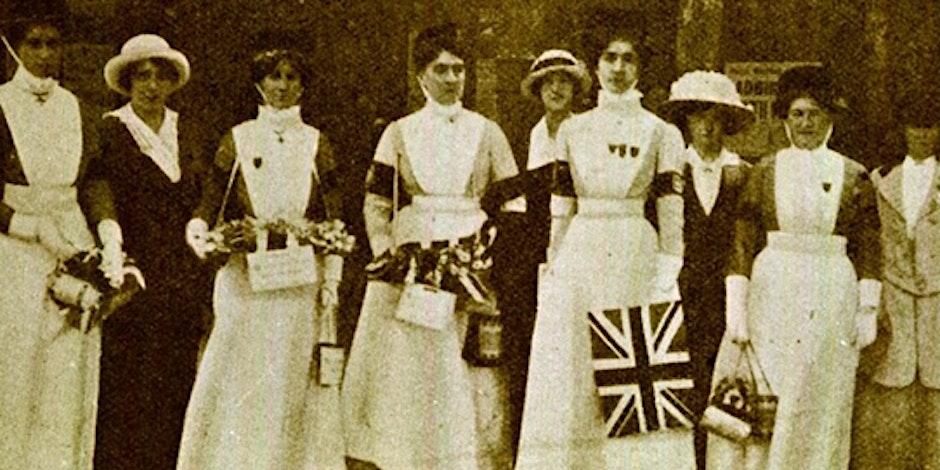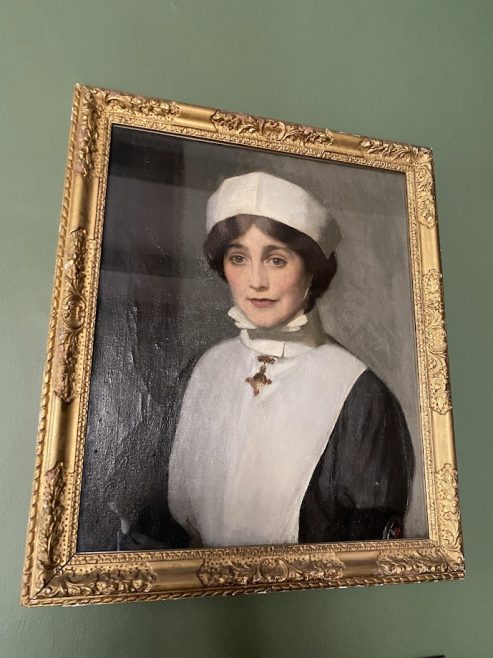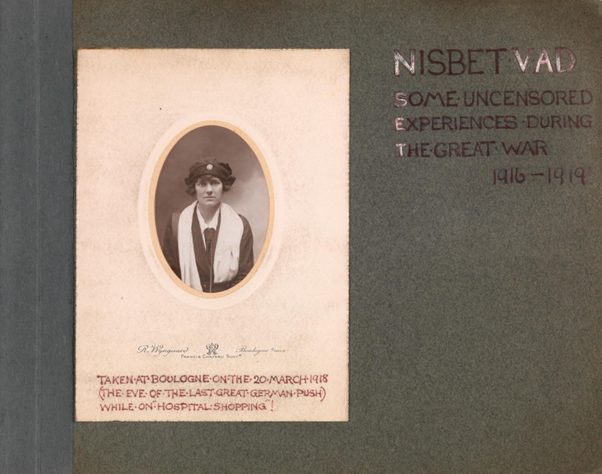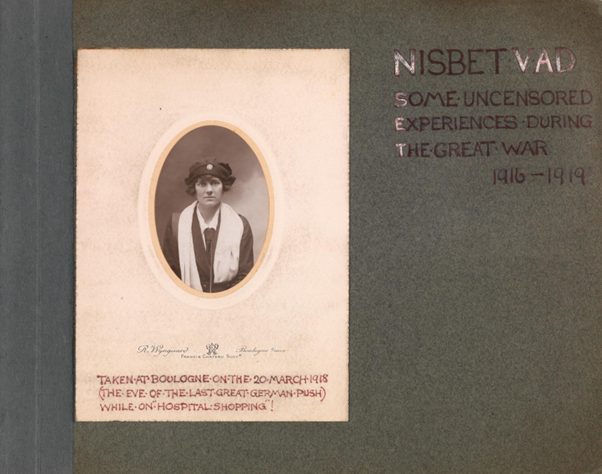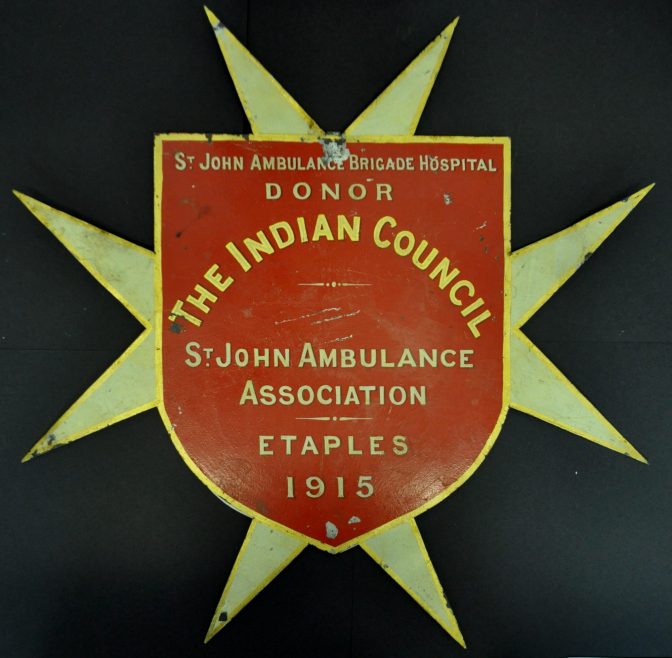Today, we celebrate International Nurse’s Day at the Museum, and we thought it would be a wonderful way to commemorate the day by discussing the important role St John Ambulance Nurses have played historically.

There was a high demand for nurses during the First World War. Before the efforts of Florence Nightingale and Mary Seacole, military nursing was seen as a predominantly male domain, with women seen as ‘too delicate’ to care for soldiers with severe injuries. By the outbreak of the First World War in 1914, British nursing was divided by those who believed that nurse status should rest on the prestige and elitism of some training hospitals and those who advocated for the need for a common standard of training and state registration. The drive for nurses at this time was closely associated with the suffrage movement with many women believing that if they were prepared to join the military and make a vital contribution to the war effort, then surely, they should get state recognition in terms of the right to vote and the right to assume registered nurse status once their training was complete.
In this blog, we are going to focus mainly on the work of volunteer nurses who trained and performed their duties with St John Ambulance. It should be noted that these nurses were not state registered, and there was some tension about the duties these nurses were given compared to their more ‘professionally’ trained counterparts. I would just like to mention that some of this blog gives first-hand accounts of the conditions of war hospitals, and some of the details may be upsetting
In 1909, the Voluntary Aid Detachment, or VAD, was formed by the British Red Cross and St John Ambulance, with the aim of filling in the gaps in the territorial medical services, providing mechanics, cooks, cleaners, and assistant nurses to the military effort. All VAD members were given basic first aid training, with some given further training in nursing, sanitation, and cooking. Many of the volunteers were upper- and middle-class women, including suffragists, feminists, married and career women and qualified nurses. Many of the women who served as VADs during the war had never worked outside of the home, and the experience was viewed as a natural extension of the philanthropic work expected of middle-class women in this time. VAD nurse, Olive Dent, explained in her memoirs: ‘Defence was a man’s job, and I, unfortunately, was a woman … And yet the New Army of men would need a New Army of nurses. Why not go and learn to be a nurse while the Kitchener men were learning to be soldiers?’

One of St John Ambulance’s most significant contributions during the First World War was the hospital based at Etaples, France which opened in September 1915. Treating over 35,000 patients during the war, the hospital was a base for many VAD nurses during the conflict. The hospital was run primarily at the expense of the Order of St John with some
support from the War Office, as well as donations. A £100 donation was able to cover the cost of providing and maintaining a hospital bed for a year, plaques were installed and placed above the bed in thanks to the donor. Different St John Ambulance districts sponsored beds, as well as the St John Ambulance Association in places such as India, Australia, and Toronto, Canada. St John Ambulance Nursing Divisions could also sponsor beds, with one plaque being given by the Prince of Wales Corps Nursing Division to the hospital in Etaples in 1915. The hospital staff consisted of the Commanding Officer, 17 Medical Officers and Surgeons, a Dental Surgeon, the Quartermaster, Secretary, Matron, Assistant Matron, 53 trained nurses, 24 VAD nurses and 141 orderlies, all from the St John Ambulance Brigade.
One of the VAD nurses was Elizabeth Veronica Nisbet who, at 29 years old, volunteered to ‘do her bit’ with the Voluntary Aid Detachment of the Order of St John. Under the orders of Matron Constance Todd, Veronica soon had to adapt to a very different way of life from her formerly middle-class upbringing. The staff at the hospital would work long shifts and stay in accommodation with few of the home comforts they were used to. The work of a VAD nurse was also often difficult, treating severely injured soldiers and giving them comfort in their final moments. Veronica was one of the VAD nurses at the hospital, there to assist and provide support for the 53 professional nurses and sisters. Veronica and her fellow VAD nurses carried out basic work such as cleaning, preparing breakfasts, and tending to the needs of the soldiers. At a time where a woman’s place was still viewed to belong in the home, this style of work was met with resounding approval and recognition, on the other hand, women whose war work did not fit this stereotype such as the Women’s Volunteer Reserve and the Women’s Army Auxiliary Corps were viewed with suspicion, with their roles not seen as being as appropriate for their class or gender.
 Although the work of the VAD nurses at Etaples was often gruelling, Veronica and her colleagues played an important role in organising entertainment for the hospital, ranging from sports days, to plays and performances. She also recorded her experiences as a VAD in the First World War in a scrapbook, including photos, newspaper clippings and sketches of her time as a nurse, which has since been digitised and you can access on our Issuu page.
Although the work of the VAD nurses at Etaples was often gruelling, Veronica and her colleagues played an important role in organising entertainment for the hospital, ranging from sports days, to plays and performances. She also recorded her experiences as a VAD in the First World War in a scrapbook, including photos, newspaper clippings and sketches of her time as a nurse, which has since been digitised and you can access on our Issuu page.
Another VAD nurse who volunteered with St John Ambulance at Etaples was Vera Brittain. She started off her volunteering as a nurse in November 1915 at the First London General Hospital in Camberwell, and later was stationed close to the front at Etaples in 1917, where she nursed German prisoners of war. Vera, like many of her counterparts, found the experience of treating the war wounded first hand traumatic. When writing to her fiancée, Roland Leighton, Vera wrote that she ‘shall never be the same person again, and wonder if, when the war does end, I shall have forgotten how to laugh.’ She later described in her autobiography, Testament of Youth, the terrifying conditions of the hospital, saying:
‘The enemy is within shelling distance- refugee sisters crowding in with nerves all awry- bright moonlight, and aeroplanes carrying machine guns- ambulance trains jolting into the siding, all day, all night- gassed men on stretchers clawing the air- dying men reeking with mud and foul green stained bandages, shrieking and writhing in a grotesque travesty of manhood- dead men with fixed empty eyes and shiny yellow faces.’
The impact of the war on these women is clear, but their work and impact never wavered. Commanding Officer, Colonel Trimble, spoke of the VAD nurses with high regard, describing how they ‘deserve special and generous mention for the part they played…they threw themselves whole-heartedly into their positions…their usefulness and assistance in the Hospital detail has been most valuable and has earned them a lasting debt of gratitude.’ The Etaples Hospital was almost completely destroyed by enemy bombs in May 1918 with several Brigade men and nurses wounded or killed, the hospital was then relocated and disbanded in March 1919.

Finally, we are going to look at an example of a VAD nurse who volunteered in England, Dora Little. Dora was a nurse with the Voluntary Aid Detachment from 1915-1919 with Bootle Nursing Division, a town in Merseyside. The Division established the Bootle Auxiliary Hospital and treated over 800 patients during the course of the First World War. She worked at the hospital for the duration of the war until its closure in February 1919, serving as a nurse and performing various domestic duties. In this portrait Dora is wearing her St John Ambulance Brigade nurse’s uniform and medallion, given to volunteers to prove ‘the competency of the holder to render first aid to the injured.’
The nurses who volunteered with the St John Ambulance Brigade made a profound impact during the First World War, and the work of nurses continues to provide vital care and assistance to those in need in times of peace and war. This blog has been delivered as part of the Archives Revealed project, a project that aims to catalogue the early records relating to the foundations of the St John Ambulance Association and the St John Ambulance Brigade. This project will help highlight the work of St John Ambulance as a whole and will allow us to continue to highlight the impact of important individuals such as those discussed today.



